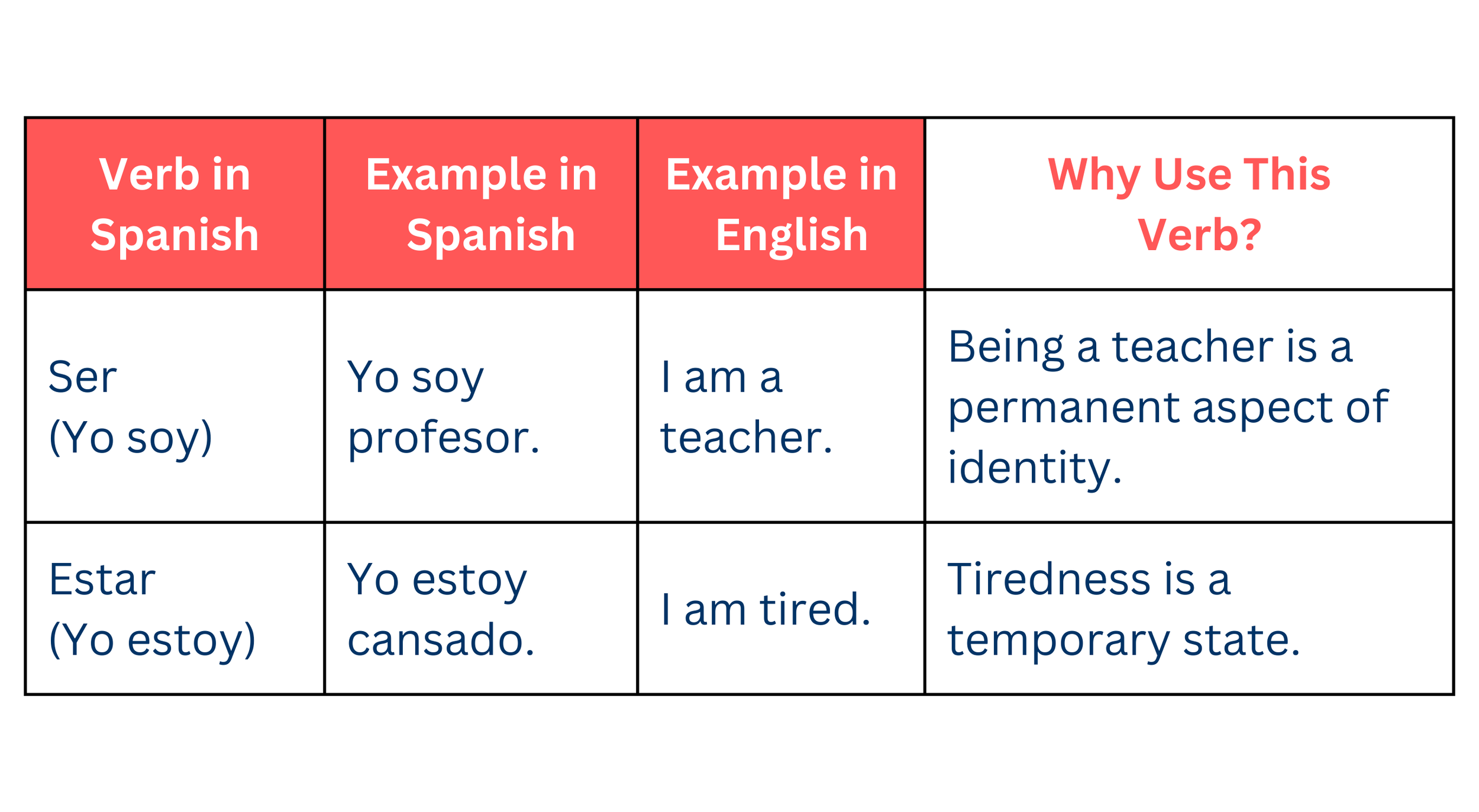To Be: Ser or Estar
In Spanish, two very important verbs are "ser" and "estar," and guess what? They both mean "to be" in English. It might sound a bit tricky at first because in English we don’t have to worry as we only have one verb for "to be." But in Spanish, whether you use "ser" or "estar" depends on what you're trying to say.
Think of "ser" as the verb for things that are usually the same all the time. This includes your name, where you're from, and things about your personality—stuff that doesn't change much day to day.
"Estar" is for things that can change, like how you're feeling right now or where you are. So, if you're talking about being happy, sad, or in a specific place like the park, you'd use "estar."
Both "ser" and "estar" are super important to get the hang of because they help you describe almost everything in your world. Knowing when to use which verb is a big deal in Spanish. It's like choosing the right key for a lock. Use the wrong one, and the sentence doesn't open up to the right meaning.
So, even though "ser" and "estar" both mean "to be," using them correctly can really change what you're saying. It's a key part of learning Spanish and helps you make sure you're understood just the way you want to be.
A Quick Glance at 'Ser' and 'Estar' and 'To Be'
Now that we know the differences between "ser" and "estar," both meaning "to be" in English, let's take a moment to see how they match up with their English counterpart:
Using 'Ser' or 'Estar' With Examples
In Spanish, the way a verb changes form depends on who is doing the action. This might sound a bit complex, but it's similar to what we sometimes see in English, though Spanish takes it a bit further.
For example, in English, we have some changes like "I am" vs. "he is" vs. "we are." However, English keeps things relatively simple compared to Spanish, where every subject (I, you, he, she, we, they) often requires its own verb form.
Below, you'll find three tables that show how the verbs "ser" and "estar" (both meaning "to be" in English) change based on who is doing the "being." We've broken these tables down by a grammatical concept known as person. "Person" in grammar refers to the perspective of the verb: first person (I/we), second person (you), and third person (he/she/it/they).
These tables will illustrate how "ser" and "estar" are used in sentences for "I am," "you are," and "it is." By looking at these examples, you'll get a clearer picture of how changing the subject of the sentence requires changing the form of the verb in Spanish—something that happens in English too, but to a lesser extent.
Remember, understanding these patterns is key to mastering Spanish verb conjugations and making your sentences sound right.
First Person Singular ("I am") - This is when the speaker is talking about themselves.
Second Person Singular ("You are") - This is when the speaker is addressing someone directly.
Third Person Singular ("It is") - This is used when the speaker is talking about someone or something else.
Yes, it's a challenge, but remember, practice really does make perfect. If you're reading this article in English, think back to how you mastered all the nuances of English — a language famous for its exceptions and irregularities. That was no small feat, was it? Learning to use "ser" and "estar" correctly might seem hard now, but you've tackled tough language challenges before!
For now, we've focused on the singular forms of "ser" and "estar" to keep things simple. But there's a whole world of plural forms and more complex structures waiting for you as you progress. Just like learning to ride a bike, the beginning might involve a few wobbles and maybe even a couple of falls. But before you know it, you'll be cruising along, using "ser" and "estar" with the confidence of a native speaker.
Keep practicing, stay curious, and don't hesitate to reach out for help or use resources to boost your learning. Spanish is a beautiful language, and you're on your way to mastering one of its key aspects. ¡Buena suerte! (Good luck!)



